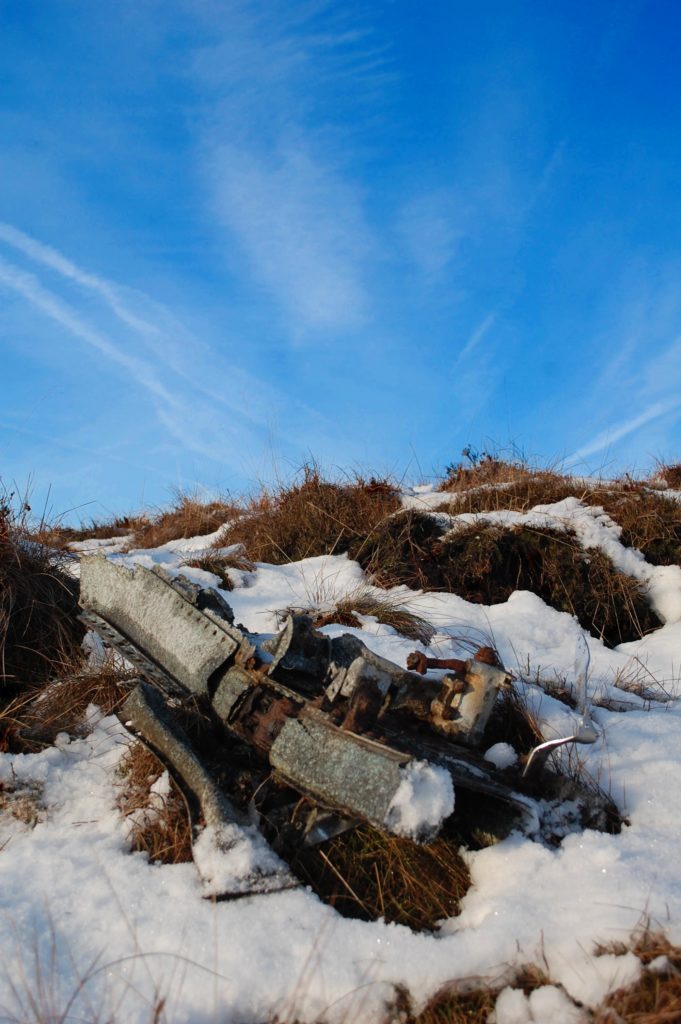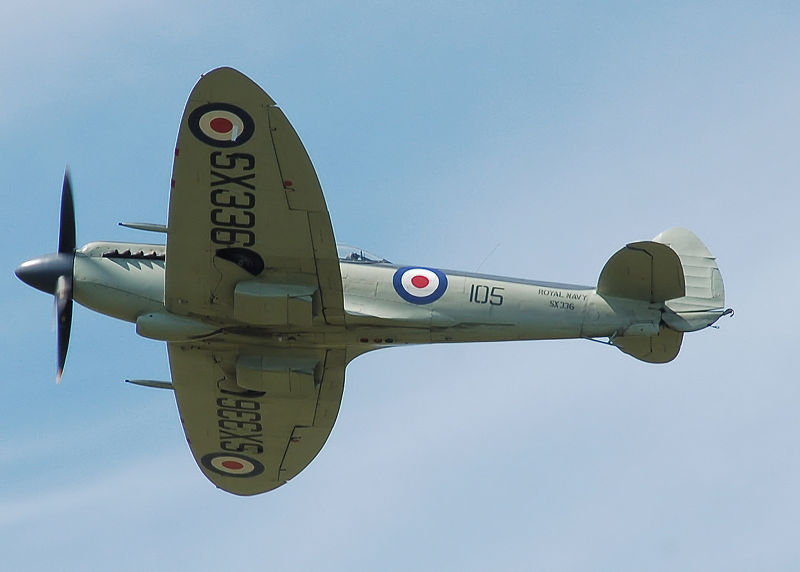Supermarine Seafire SP325, Wildboarclough, south east of Macclesfield.
‹ Return to Air Crash Sites

Seafire SP325, Wildboarclough
16 July 1949. Two pilots with the Royal Naval Volunteer Reserve were on a formation flying exercise. Having left their base at RNAS Stretton, lead pilot Lt Eccles (Seafire SX314) had drifted east of the Cheshire plain and towards higher ground in poor visibility without realising it. Lieutenant Eccles was concentrating on his instruments, which told him he was 1,500 feet above sea level, when his Seafire crashed into a dry stone wall on Tagsclough Hill. Lieutenant Dyke was concentrating on following his leader.
The crash was witnessed by a farmer who saw the Seafires tear across the field, just skimming the ground, to crash just yards from where he stood. Cunningham notes that Lt Eccles wouldn’t have had time to register the impact, and Lt Dyke “…would only have had time to wonder at his leader’s sudden disintegration before he too knew nothing but oblivion.”
The airmen were
Lieutenant Edward Hugh Ramsden Eccles Pilot (Seafire SX314)
Lieutenant Pilot Frank James Dyke (Seafire SP325)
Details;
Peakland Air Crashes The Central Area (2006), Pat Cunningham.
Supermarine Seafire

Image from wikipedia commons
http://en.wikipedia.org/wiki/File:Seafire_105-sx336_cotswoldairshow_2010_arp.jpg
12 comments on “Supermarine Seafire SP325, Wildboarclough, south east of Macclesfield.”
Leave a Reply Cancel reply
Image Information
-
Full Size: 2000×3008px
Aperture: f/6.3
Focal Length: 30mm
ISO: 200
Shutter: 1/160 sec
Camera: NIKON D40



You do get around Ian, even in the snow!
Great work Ian , the seafire is a very attractive plane ,its heritage is very evident .
Outstanding work Ian, you must have to do a huge amount of research on these crash sites.
The low angle makes this a dramatic shot
Snow,blue sky and aircraft wreckage.Makes a compelling image,especially with your usual fascinating background story.
Like the way you’ve used the angle to include the contrails Ian.
Must have a read of that book sometime.
I’m always amazed that all these years later there are still items of engine and airframe at these wreck sites, but I guess carrying an engine block across moorland is beyond the capabilities of most enthusiasts !
I used to spot at RNAS Stretton as a mere sprat back in the ’50s, and remember row upon row of cocooned Seafires lined up on the airfield. I guess they were all scrapped veventually, but can you imagine what just one preserved Seafire airframe would fetch now ? Big, big bucks I think !
Nice shot, thanks for the history, keeps their memory alive.
Nice pov for the shot, got a really nice blue sky there with the contrails as well (polariser?).
Thanks for remembering them.
Love hearing the associated stories Ian – keep up the good work.
beautiful exposure…lovely blue here.
—
Seen on your photo stream. (?)
Great catch, Ian!